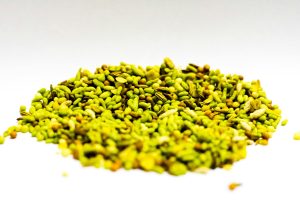Mastering Soup Bases For Rich and Savory Meals
Are you tired of mediocre soups that lack depth and flavor? Look no further, because mastering soup bases is the key to creating rich and savory meals that will leave your taste buds begging for more. Soup bases are the foundation of any great soup, providing a flavorful base that elevates the entire dish. In this article, we will delve deeper into the world of soup bases, learning how to master them and create delicious soups that will impress even the toughest food critics.
Understanding Soup Bases
Soup bases, also known as soup stocks, are the liquid foundations of soups made by simmering a combination of ingredients for an extended period. They can be made from various ingredients such as vegetables, meats, or even fish. However, the most popular and versatile base is typically made from a combination of bones, vegetables, and herbs.
The simmering process extracts flavor, nutrients, and gelatin from the ingredients, creating a rich and flavorful liquid that is the perfect starting point for any soup. Properly mastering soup bases will help you take your soups to the next level, making them more complex and satisfying.
The Key to Mastering Soup Bases: Time and Quality Ingredients
When it comes to soup bases, two essential factors come into play: time and quality ingredients. The longer you simmer your ingredients, the more flavor they will release, resulting in a deeper and more intense soup base. In the world of soup bases, patience is truly a virtue.
Additionally, using high-quality ingredients is vital in creating a flavorful base. Whether you are using meat, vegetables, or a combination of both, make sure they are fresh and of the highest quality. Doing so will not only enhance the taste of your soup base, but it will also provide a healthier and more nutritious option.
Vegetable-based Soup Bases
Veggie lovers, rejoice! Vegetable-based soup bases are a fantastic option for creating rich and savory soups without the need for meat. Vegetables such as onions, carrots, celery, and mushrooms are excellent for imparting flavor, while herbs like thyme, parsley, and bay leaves add a delightful aroma.
To create a vegetable-based soup base, simply add your chosen vegetables and herbs to a large pot, cover them with water, and let it simmer for at least an hour. The longer you simmer, the more flavor you will achieve. Once done, strain the base to remove the vegetables and herbs, and you are left with a delicious and healthy soup base.
Meat-based Soup Bases
For all you meat lovers out there, meat-based soup bases are the way to go. Made by simmering bones and meat in water, these bases create a rich and hearty flavor that is perfect for soups with a meaty profile. Popular meats used for soup bases include beef, chicken, pork, and even fish.
To make a meat-based soup base, simply add the bones and meat to a pot, cover with water, and let it simmer for several hours. The longer you simmer, the more intense and flavorful your base will be. Once done, strain the base to remove any impurities and excess fat, and you are left with a delicious and nutritious base that can be used for various soup recipes.
Creating Flavorful Soup Bases from Scratch
If you have the time and patience, creating your soup base from scratch is the ultimate way to achieve a truly complex and delicious flavor. By using both meat and vegetables, you can combine the best of both worlds and create an incredibly flavorful soup base.
Start by simmering your chosen bones and vegetables in water, along with herbs and spices of your choice. As the soup base cooks, you can add more ingredients to intensify the flavor, such as vegetables, wine, or even tomato paste. Let the base simmer for several hours, and the result will be a robust and tasty liquid that can be used as a base for various soups.
Tips for Mastering Soup Bases
1. Utilize Different Cooking Methods
Although simmering is the most common cooking method for soup bases, don’t be afraid to experiment with other techniques. Roasting vegetables and meat before simmering them can add depth and a slightly smoky flavor to your base. You can also use a pressure cooker for a quicker and more intense result.
2. Don’t Skim on the Skim
While simmering your soup base, impurities and excess fat will rise to the surface. Don’t forget to skim them off periodically to achieve a cleaner and more flavorful base.
3. Store and Freeze for Later Use
If you have made a large batch of soup base, don’t let it go to waste. Store it in airtight containers and freeze for later use. That way, you’ll always have a flavorful base on hand whenever you want to whip up a quick and delicious soup.
Conclusion
Mastering soup bases is the secret to creating rich and savory meals that everyone will love. By understanding the basics of soup bases and taking the time to create flavor-packed liquids, you can elevate your soups to a whole new level. So grab your pot, fire up the stove, and start mastering those soup bases today!










